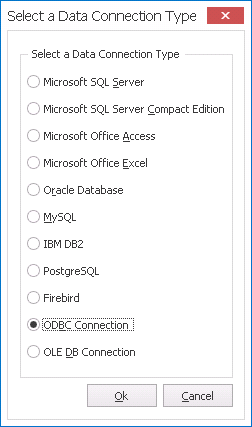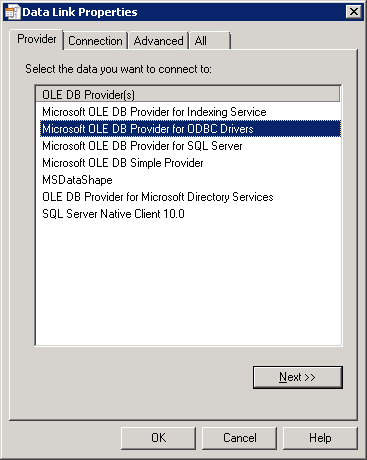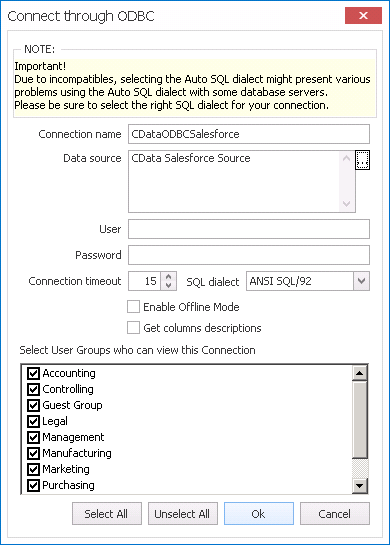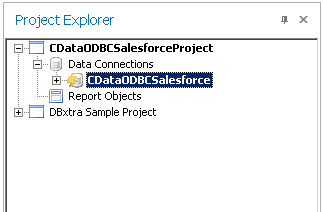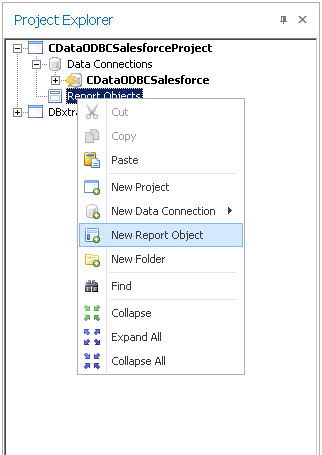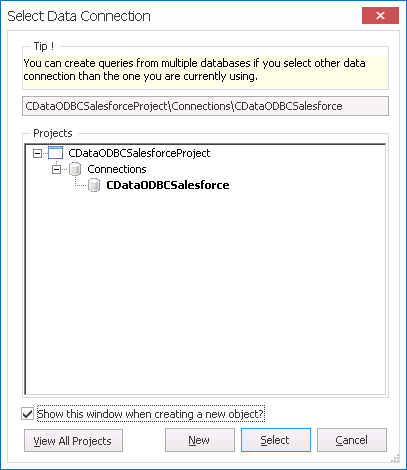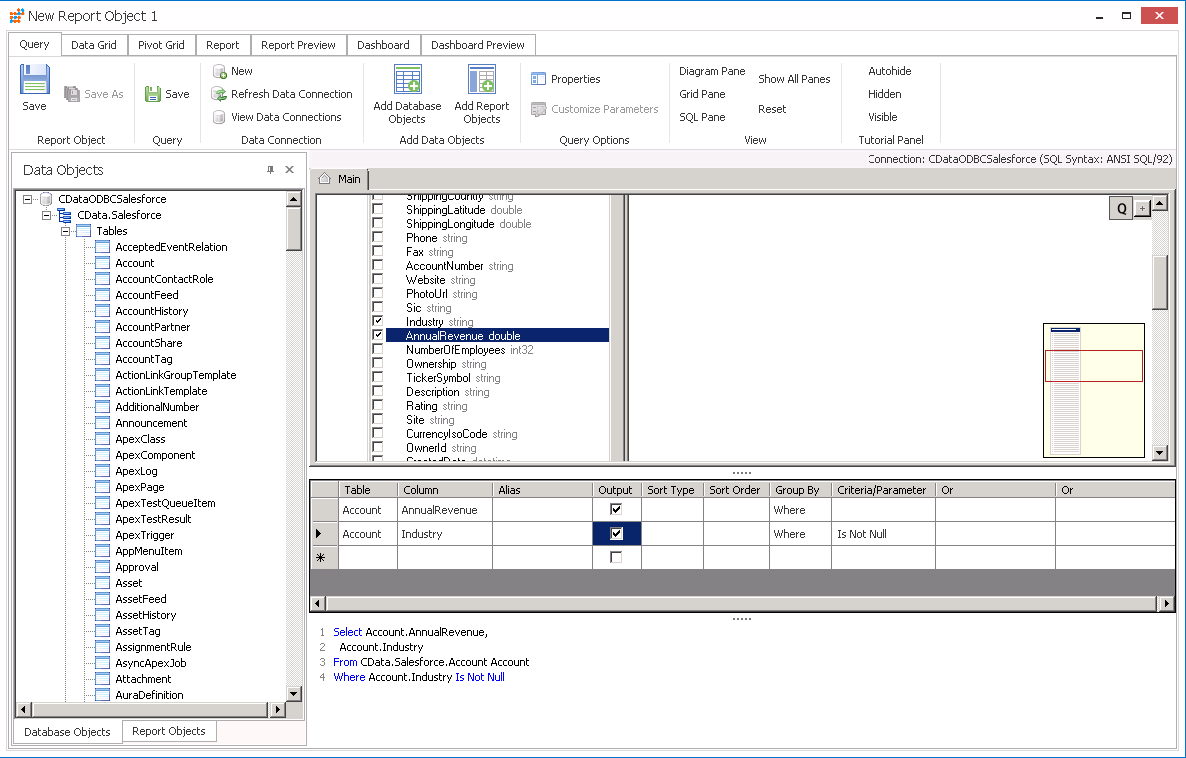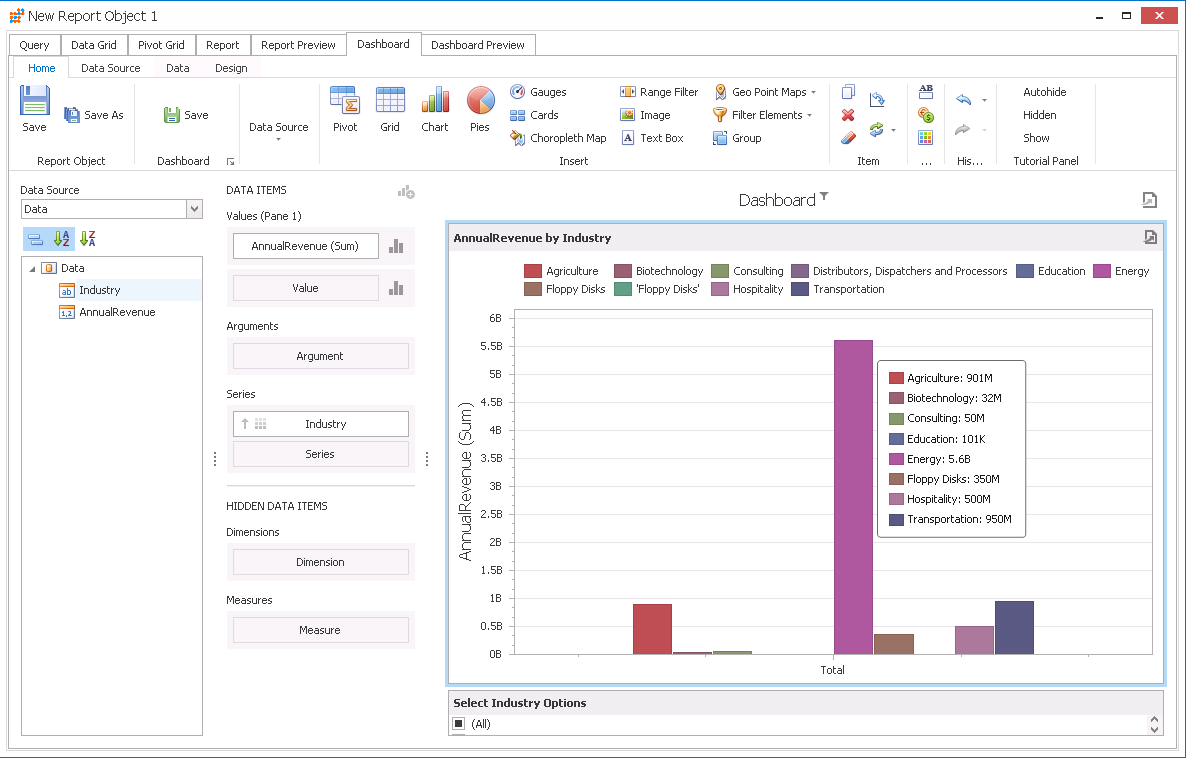Discover how a bimodal integration strategy can address the major data management challenges facing your organization today.
Get the Report →Build Dashboards with Dynamics 365 Data in DBxtra
Create dynamic dashboards and perform analytics based on Dynamics 365 data in DBxtra.
The CData ODBC driver for Dynamics 365 enables access to live data from Dynamics 365 under the ODBC standard, allowing you work with Dynamics 365 data in a wide variety of BI, reporting, and ETL tools and directly, using familiar SQL queries. This article shows how to connect to Dynamics 365 data as a generic ODBC Data Provider and create charts, reports, and dashboards based on Dynamics 365 data in DBxtra.
About Dynamics 365 Data Integration
CData simplifies access and integration of live Microsoft Dynamics 365 data. Our customers leverage CData connectivity to:
- Read and write data in the full Dynamics 365 ecosystem: Sales, Customer Service, Finance & Operations, Marketing, and more.
- Extend the native features of Dynamics CRM with customizable caching and intelligent query aggregation and separation.
- Authenticate securely with Dynamics 365 in a variety of ways, including Azure Active Directory, Azure Managed Service Identity credentials, and Azure Service Principal using either a client secret or a certificate.
- Use SQL stored procedures to manage their Dynamics 365 entities - listing, creating, and removing associations between entities.
CData customers use our Dynamics 365 connectivity solutions for a variety of reasons, whether they're looking to replicate their data into a data warehouse (alongside other data sources)or analyze live Dynamics 365 data from their preferred data tools inside the Microsoft ecosystem (Power BI, Excel, etc.) or with external tools (Tableau, Looker, etc.).
Getting Started
Connect to Dynamics 365 Data
- If you have not already done so, provide values for the required connection properties in the data source name (DSN). You can configure the DSN using the built-in Microsoft ODBC Data Source Administrator. This is also the last step of the driver installation. See the "Getting Started" chapter in the Help documentation for a guide to using the Microsoft ODBC Data Source Administrator to create and configure a DSN.
Edition and OrganizationUrl are required connection properties. The Dynamics 365 connector supports connecting to the following editions: CustomerService, FieldService, FinOpsOnline, FinOpsOnPremise, HumanResources, Marketing, ProjectOperations and Sales.
For Dynamics 365 Business Central, use the separate Dynamics 365 Business Central driver.
OrganizationUrl is the URL to your Dynamics 365 organization. For instance, https://orgcb42e1d0.crm.dynamics.com
When you configure the DSN, you may also want to set the Max Rows connection property. This will limit the number of rows returned, which is especially helpful for improving performance when designing reports and visualizations.
- Open the DBxtra application and in the New menu click Project and name the Project.
![Creating a New Project.]()
- Select ODBC Connection as the Data Connection Type.
![Creating an ODBC Connection.]()
- Click the browse option () for the Data Source.
- In the Data Link Properties window, select Microsoft OLE DB Provider for ODBC Drivers on the Provider tab.
![Select the Provider]()
- On the Connection tab, select the Data Source Name and the initial catalog to use (CData).
![Select the Provider]()
- Name the Connection and select the appropriate User Groups.
![Connection name and User Groups]()
- Double-click the Connection from within the Project to connect to the data.
![Connecting to the data.]()
Create a Dashboard with Dynamics 365 Data
You are now ready to create a dashboard with Dynamics 365 data.
- Right-click Report Objects under the Project and select New Report Object.
![Creating a Report Object for the Project]()
- In the new Report Object, click the link to create the Query.
- In the Select Data Connection window, select the newly created data connection.
![Select Data Connection]()
- On the Query tab, expand the connection objects and select the Tables, Views, and specific columns you wish to include in your dashboard. You can specify search requirements and even create complex queries which include JOINs and aggregations.
![Selecting the data/building the query.]()
- On the Dashboard tab, select the visualizations and features for your dashboard. Assign the data values from the query to the appropriate fields for the Dashboards items (Values, Series, etc.)
![Building the Dashboard.]()
With a new Dashboard created, you are ready to begin analysis of Dynamics 365 data. Thanks to the ODBC Driver for Dynamics 365, you can refresh the Dashboard and immediately see any changes made at the source. In the same way, you can create and view Reports with live, up-to-date Dynamics 365 data.






